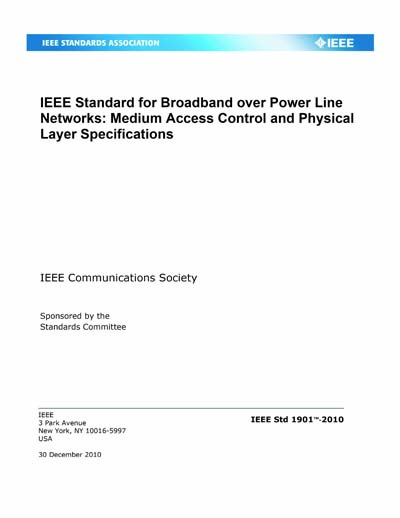Historical
IEEE 1901-2010
IEEE Standard for Broadband over Power Line Networks: Medium Access Control and Physical Layer Specifications
A standard for high-speed communication devices via electric power lines, so called broadband over power line (BPL) devices, is defined. Transmission frequencies below 100 MHz are used. All classes of BPL devices can use this standard, including BPL devices used for the first-mile/last-mile connection to broadband services as well as BPL devices used in buildings for local area networks (LANs), Smart Energy applications, transportation platforms (vehicle) applications, and other data distribution. The balanced and efficient use of the power line communications channel by all classes of BPL devices is the main focus of this standard, defining detailed mechanisms for coexistence and interoperability between different BPL devices, and ensuring that desired bandwidth and quality of service may be delivered. The necessary security questions are addressed to ensure the privacy of communications between users and to allow the use of BPL for security sensitive services.
Institute of Electrical and Electronics Engineers [ieee]

